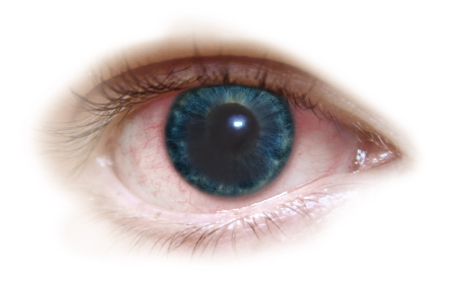
Understanding Glaucoma
Issue 81 June 2011
An eye disease which affects millions around the world, the most common form of glaucoma is a growing condition amongst the elderly. Optician, Tim Harwood, looks into the different types of glaucoma.
Glaucoma is an eye disease that typically affects your peripheral vision and generally occurs in both eyes. There are a few different types of glaucoma but by far the most common is called open angle glaucoma. This is caused by a slow increase in eye pressure, which leads to gradual damage of the optic nerve at the back of your eyes. This damage to the optic nerve causes a partial reduction to your peripheral (side) vision. Due to the fact that the central vision is generally not affected, most people are completely unaware they have the disease as there are no real symptoms for this particular type of glaucoma.
Types of glaucomaClosed angle glaucoma / Acute glaucoma
This is a rare type of glaucoma and is characterised by a sudden increase in eye pressure, which is far higher than what occurs in open angle glaucoma. Open angle glaucoma can result in eye pressures of up to 30 mmHg (the unit which eye pressure is measured in), whereas closed angle glaucoma can rise to 80 mmHg. As well as the pressure being extremely high, it is the speed at which this pressure rises which makes the symptoms so severe. Those affected may experience severe eye pain, headaches, nausea, haloes around lights and blurred vision. Closed angle glaucoma is generally caused when something stops the normal flow of fluid within the eye between the iris (coloured part of the eye) and the lens, hence resulting in a rise of pressure.
Normal pressure glaucoma
This refers to a type of glaucoma where there is damage to the optic nerve in the absence of high eye pressure. The exact cause of this type of glaucoma is not known but it is believed to be related to the blood flow to the optic nerve. This type of glaucoma is more difficult to detect and harder to treat but it is generally a more rare type.
Secondary glaucoma
This type of glaucoma occurs as a secondary condition to another eye disease or injury. Eye diseases that can also cause glaucoma include retinal vein occlusion, Iritis and retinal detachments.
How can glaucoma be detected?To maintain your eyesight, it is imperative that you have regular eye examinations with your optician. During a routine eye examination, the optician will typically carry out three tests to determine whether you have the condition or not. These are as follows:
Tonometry
This test measures the pressure inside your eyes and you will probably remember it as the ‘puff of air test’. If your pressure is over a certain number, your optician may refer you to have your eyes checked at the hospital. Even if the pressure in your eyes is very high, you are unlikely to have any symptoms of glaucoma as the increase occurs over such a long period of time.
Examination of the optic nerve
During an eye test, your optician will routinely examine the optic nerve, which is the main area of the eye that glaucoma affects. Certain changes will indicate the possibility of the condition and your optician is trained to pick up these signs.
Visual field test
This is remembered by most as being the ‘flashing lights’ test. If you have glaucoma, then the results of the test will show some peripheral loss of vision.
DiagnosisIf your optician thinks you have glaucoma, then you are likely to be referred to the local eye hospital to be seen by an ophthalmologist. For the vast majority of people, their central vision is not affected and consequently it has no negative impact on their lives. Having some peripheral vision loss is generally not noticeable and will not stop you from doing any of your day to day tasks such as driving and reading. One has to suffer from a fairly advanced stage of glaucoma before the visual field loss is sufficient enough to affect visual performance. However, if you are diagnosed as suffering from closed angle glaucoma, your optician is likely to refer you to eye casualty for immediate treatment, as this type of glaucoma is more severe.
TreatmentGeneral treatment includes medicated eye drops, which must be administered once or twice per day. These eye drops are used to reduce the pressure in the eyes to stop any further damage to the optic nerve. Most people can control the condition with the prescribed eye drops and apart from having to attend a hospital appointment once a year, the disease will have very little bearing on one’s life. For a very small percentage of people who do not respond well to the eye drops, the ophthalmologist may consider surgery. There are three main types of surgery for glaucoma.
Laser (Trabeculoplasty)
This is normally carried out under local anaesthetic and effectively involves using a laser to open up the drainage system in the eyes. This drainage system is called the Trabecular meshwork and opening it up will mean the fluid in the eye can drain out more readily, therefore reducing the pressure in the eye.
Surgery (Trabeculectomy)
Surgery is normally considered the last option and may be indicated when either the eye drops or laser do not have the desired effect on the pressure within the eyes. In simple terms, a Trabeculectomy involves the creation of a drainage channel within the wall of the eye, which helps reduce the pressure within the eye.
Iridotomy
This is the treatment for closed angle glaucoma following the initial treatment with an injection. The aim of an Iridotomy is to restore the normal flow of fluid within the eye by creating a hole in your Iris.
PreventionOwing to the ‘silent’ nature of the disease, getting regular eye tests is absolutely crucial in detecting the condition in its early stages. Even if you think you have perfect vision and do not require glasses, you should still have regular eye tests to assess the health of your eyes.
Tim Harwood is an optician with 10 years experience in his field.
Bookmark this |
|
Add to DIGG |
|
Add to del.icio.us |
|
Stumble this |
|
Share on Facebook |
|
Share this |
|
Send to a Friend |
|
Link to this |
|
Printer Friendly |
|
Print in plain text |
|


Comments
6 Comments
1
Buy Generic Viagra Online
25 Jan 17, 09:25
Its more helpful blog...Thanks for posting
2
kelly Thomson
16 Sep 16, 12:07
thanks for sharing this information with us for health
tips visit saferxstore.com
3
Viagra Online
2 Sep 16, 07:46
this is nice and informative post those peoples who suffering
eye problems so much. Thanks for sharing such a nice post
with us.
4
generic viagra online pharmacy
23 Jul 16, 12:26
nice post
5
generic viagra online pharmacy
23 Jul 16, 12:25
This particular disorder is harmful. One should immediately treat this one with bimatoprost.
6
kbashir56
17 Jun 11, 19:26
it is a very informative article.a must read for people
above 40.